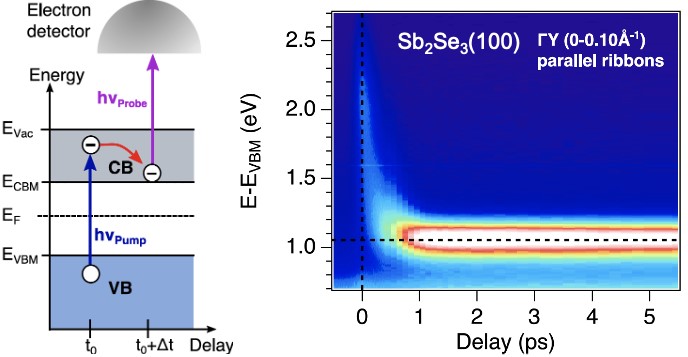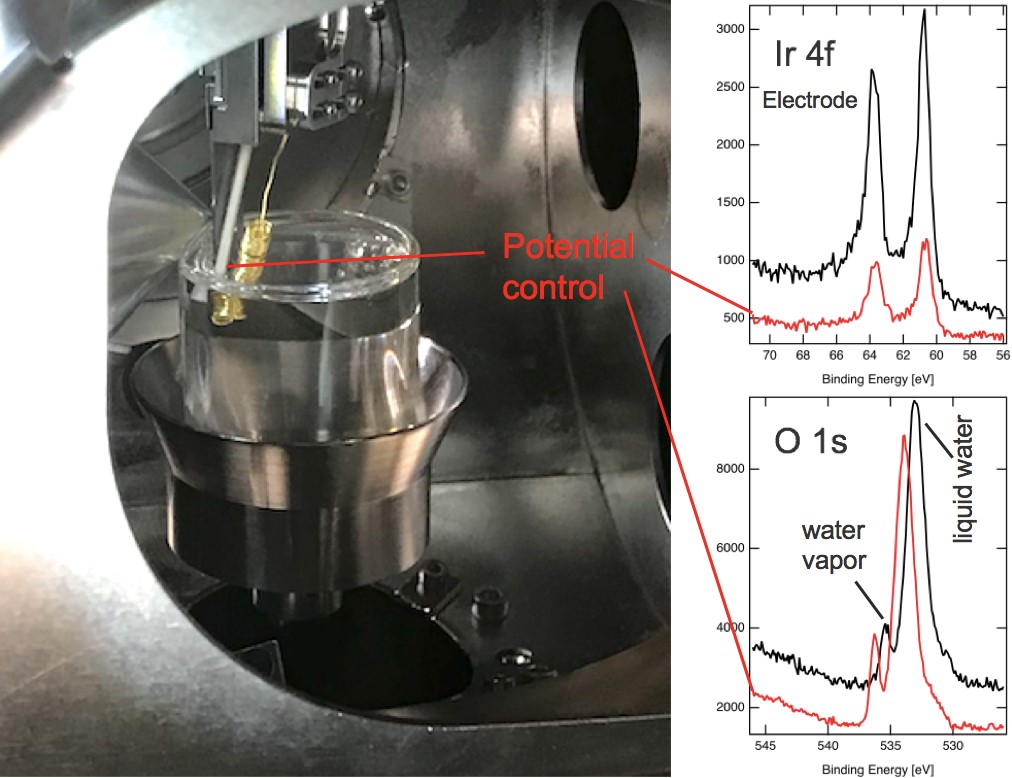Surfaces and Interfaces
Lead by Prof. Jürg Osterwalder
The heterogeneous route to a solar-light-driven water splitting process is technologically compelling because the water reduction and oxidation steps can be spatially separated, thus avoiding unwanted recombination reactions and facilitating separation of the produced gaseous hydrogen and oxygen. In a photoelectrochemical (PEC) cell, each of the two electrodes can be optimized for the respective reaction. Typically, they consist of a semiconducting material with a small enough band gap to absorb a large fraction of the solar spectrum. Upon irradiation electron-hole pairs are created that need to be separated efficiently in order to avoid recombination. At semiconductor interfaces, band bending can introduce electrical fields that steer the proper charge to the electrode-electrolyte interface. Finally, these charges need to be energetic enough and live long enough at the interface to drive the respective redox-reaction, which is typically promoted by a catalyst. Last but not least, the electrode surface has to be stable under these rather harsh conditions.
Characterizing and understanding individual steps of this complex sequence of events may help to optimize the overall efficiency of PEC cells. For example, the charge separation and charge transport to the solid-electrolyte interface can be improved by introducing semiconductor heterostructures that shape the electrostatic landscape within the absorption length of the light. Or molecular catalysts with individual metal centers can replace more expensive precious metal catalysts. In our group we prepare model electrodes based on materials and catalysts that are synthesized and used by other groups within the LightChEC consortium. Our emphasis is on single-crystalline material where we can have precise control over composition, structural parameters and electronic energy levels using a versatile toolbox of surface science techniques. Band bending and energy level alignment at interfaces, are measured by means of XPS and UPS. Time-resolved two-photon photoemission provides information on the dynamics of hot electrons after excitation by ultrashort laser pulses (see Fig. 1).
Figure 1: Principles of a time-resolved two-photon photoemission (2PPE) experiment for studying the ultrafast dynamics of photoexcited electrons in semiconductor surfaces. The data set was measured with 3 eV pump and 6 eV probe laser pulses, showing the relaxation of hot electrons into the bottom of the conduction band on a Sb2Se3(100) surface. (from L. Grad et al., Phys. Rev. Materials 4, 105404 (2020)).
Most of these studies are carried out in ultrahigh vacuum, but a recently commissioned endstation at the Swiss Light Source at the Paul Scherrer Institute allows us to perform ambient pressure XPS studies of solid-electrolyte interfaces under electrochemical potential control (Fig. 2).
Figure 2: Sample environment in the ambient pressure XPS endstation at the Swiss Light Source during a dip&pull experiment studying an Ir(111) surface covered with an ultrathin film of KOH electrolyte under potential control. The right panels show XPS spectra taken with the two settings of the electrochemical potential. (from Z. Novotny et. al., Rev. Sci. Instrum. 91, 023103 (2020)).

